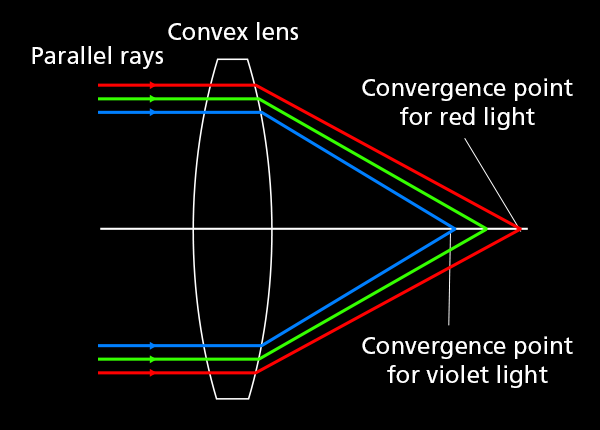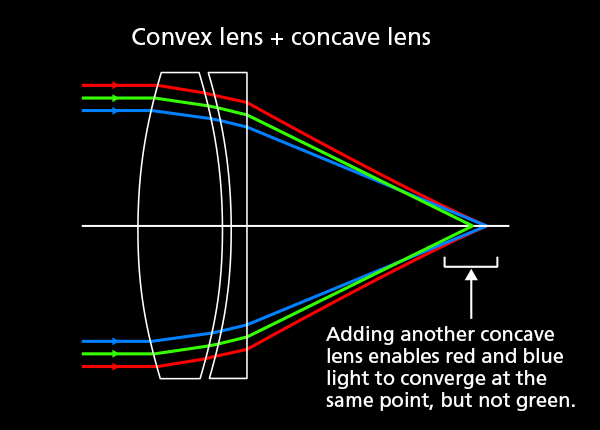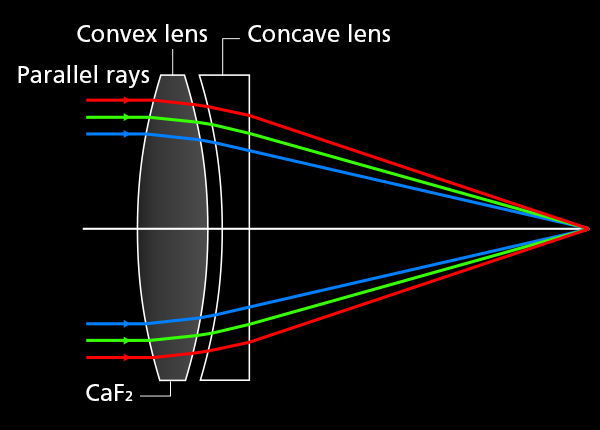Properties of fluorite lenses
1. Chromatic aberration correction through extraordinary partial dispersion
Light refracts when it permeates water or other transparent objects. Lenses use this property to make light converge on a specific focus point. However, the degree to which a light ray refracts depends on its color, and light rays of different colors converge in different positions. This is called chromatic aberration.
Chromatic aberration is not obvious on a small magnifying glass, but on larger telephoto lenses, you will be able to notice some color bleeding in the image. However, as fluorite has a low refractive index and low dispersion (extraordinary partial dispersion) unlike normal glass, it can remove chromatic aberration almost completely when combined with other glass materials. This property is frequently utilized on telephoto lenses.

1 convex lens
Different colors refract at different positions, converging at different points.

Glass convex lens + concave lens
Red and blue wavelengths are converged at the same point, but the green wavelength converges differently.

Convex fluorite lens + concave lens
Combining fluorite with other glass materials corrects chromatic aberration almost completely.

Example of chromatic aberration on a telephoto lens
2. Infrared and ultraviolet light transmittance
Fluorite has a wide transmittance range, allowing light from the vacuum ultraviolet to infrared ranges to pass through it. High-purity fluorite has particularly good ultraviolet wavelength transmittance, and is used in UV lenses and material to make windows for scientific equipment.